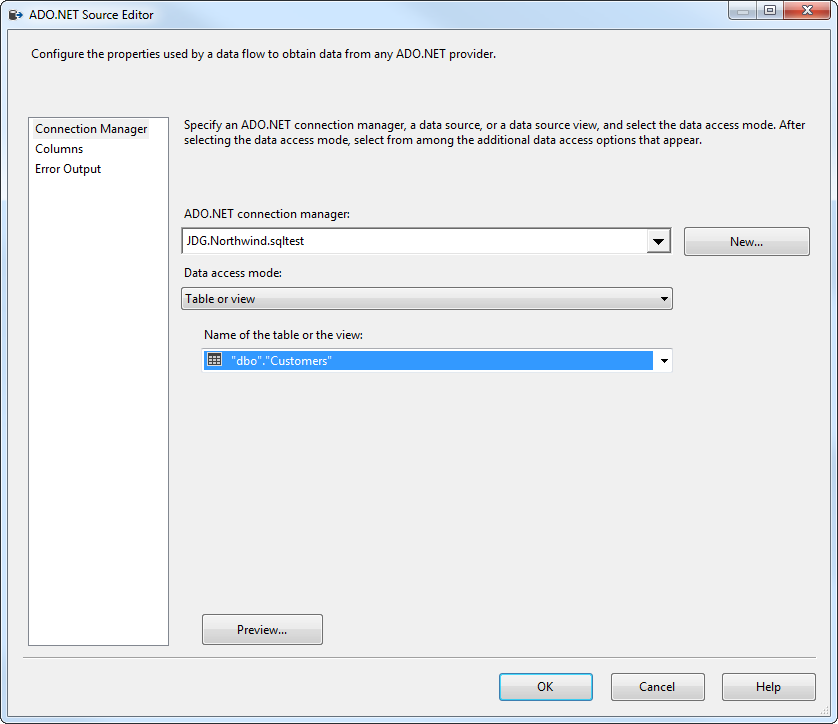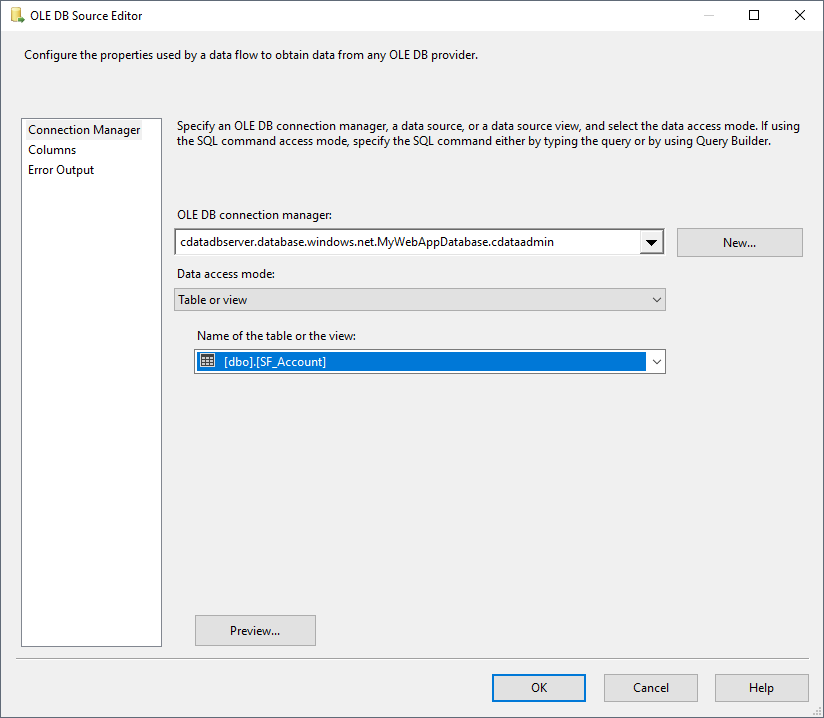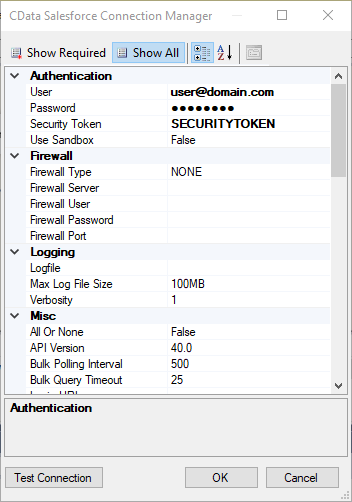Discover how a bimodal integration strategy can address the major data management challenges facing your organization today.
Get the Report →Export Data from SQL Server to SAS Data Sets through SSIS
Easily push SQL Server data to SAS Data Sets using the CData SSIS Tasks for SAS Data Sets.

SQL Server databases are commonly used to store enterprise records. It is often necessary to move this data to other locations. The CData SSIS Task for SAS Data Sets allows you to easily transfer SAS Data Sets data. In this article you will export data from SQL Server to SAS Data Sets.
Add Source and Destination Components
To get started, add a new ADO.NET Source control and a new SAS Data Sets Destination control to the data flow task.

Configure the ADO.NET Source
Follow the steps below to specify properties required to connect to the SQL Server instance.
- Open the ADO.NET Source and add a new connection. Enter your server and database information here.
- In the Data access mode menu, select "Table or view" and select the table or view to export into SAS Data Sets.
- Close the ADO NET Source wizard and connect it to the destination component.

Create a New Connection Manager for SAS Data Sets
Follow the steps below to set required connection properties in the Connection Manager.
- Create a new connection manager: In the Connection Manager window, right-click and then click New Connection. The Add SSIS Connection Manager dialog is displayed.
- Select CData SASDataSets Connection Manager in the menu.
-
Configure the connection properties.
Set the following connection properties to connect to your SAS DataSet files:
Connecting to Local Files
- Set the Connection Type to "Local." Local files support SELECT, INSERT, and DELETE commands.
- Set the URI to a folder containing SAS files, e.g. C:\PATH\TO\FOLDER\.
Connecting to Cloud-Hosted SAS DataSet Files
While the driver is capable of pulling data from SAS DataSet files hosted on a variety of cloud data stores, INSERT, UPDATE, and DELETE are not supported outside of local files in this driver.
Set the Connection Type to the service hosting your SAS DataSet files. A unique prefix at the beginning of the URI connection property is used to identify the cloud data store and the remainder of the path is a relative path to the desired folder (one table per file) or single file (a single table). For more information, refer to the Getting Started section of the Help documentation.
Configure the SAS Data Sets Destination
In the destination component Connection Manager, define mappings from the SQL Server source table into the SAS Data Sets destination table and the action you want to perform on the SAS Data Sets data. In this article, you will insert restaurants entities to SAS Data Sets.
- Double-click the SAS Data Sets destination to open the destination component editor.
- In the Connection Managers tab, select the connection manager previously created.
-
In the Use a Table, menu, select restaurants.
In the Action menu, select Insert.
![The destination table and action to be performed.]()
-
On the Column Mappings tab, configure the mappings from the input columns to the destination columns.
![The mappings from the SQL Server source to the SSIS destination component.]()
Run the Project
You can now run the project. After the SSIS Task has finished executing, data from your SQL table will be exported to the chosen table.









